A celebration of anniversaries and novelties
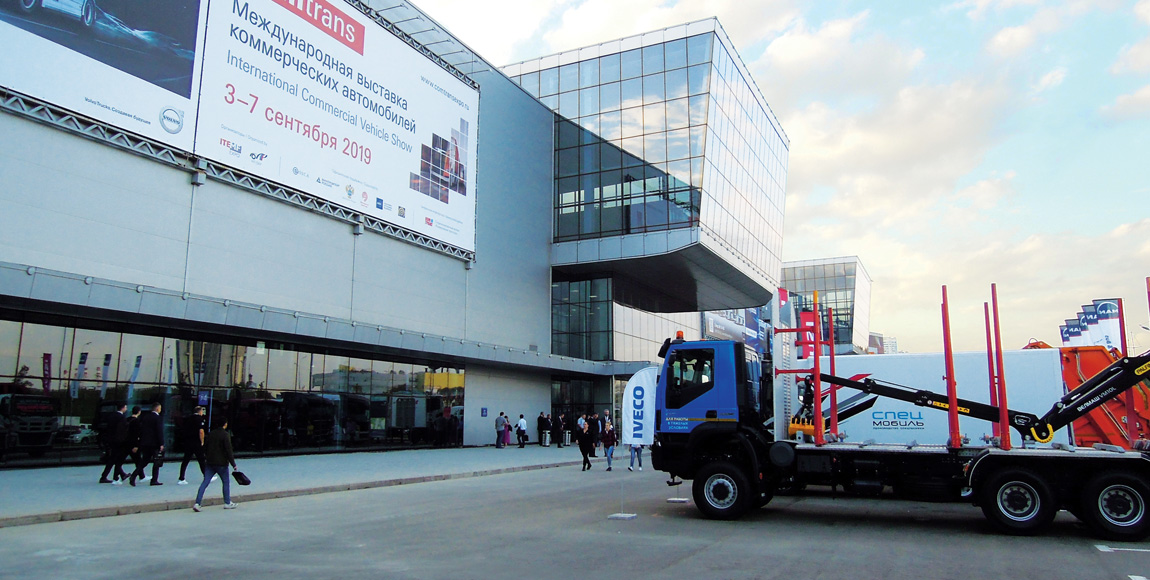
The Comtrans international commercial vehicle trade fair was held in Moscow from September 3 to 7. And, as our Russian writer reports, it was a fair full of anniversaries and novelties. Story and photographs by VLADIMIR CHEKHUTA
All Europe’s giants of transport machinery and well-known commercial vehicle producers from Russia and Asian countries flocked to this year’s Comtrans. In fact, more than 265 companies from 13 countries presented their wares at the show.
It was interesting to see several companies celebrating their anniversaries at their stands. For instance, Kamaz celebrated the fact that its plant has its 50th anniversary in December, MAZ commemorated its 75th birthday and Renault Trucks celebrated its 125 years in business.
The last time FOCUS attended Comtrans – back in 2017 – the Russian commercial vehicle industry was flying high. Unfortunately, things there are not going well now. According to the consulting firm Autostat, in the first half of 2019, only 38 844 new medium and heavy-duty trucks were registered in Russia. This is 6,4-percent less than in the same period last year.
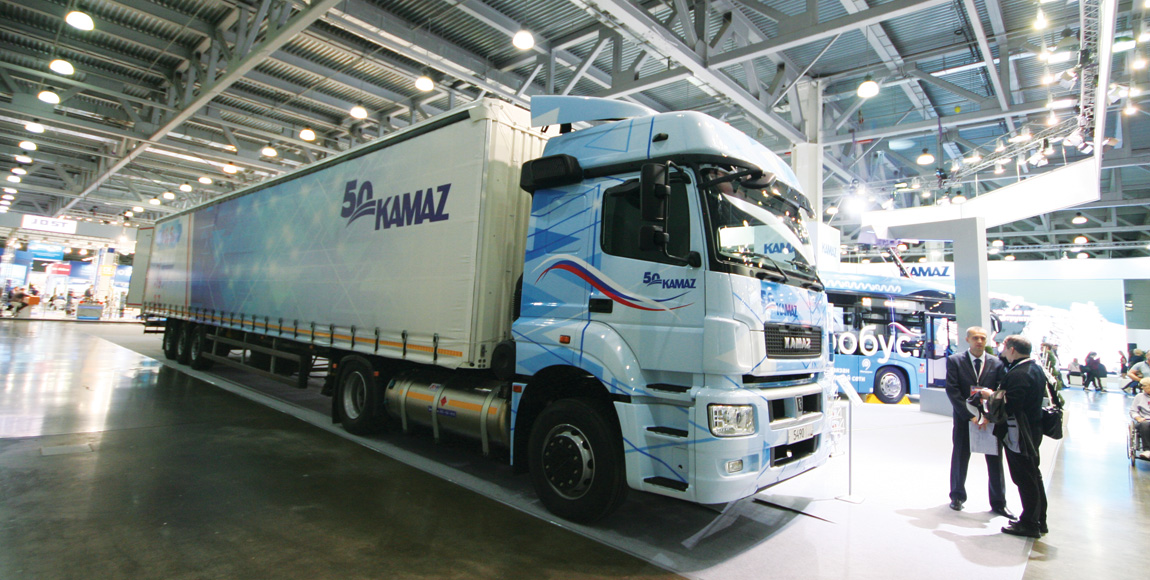
The main reasons for declining sales are a recession in the industry, the reduction and closures of medium and small enterprises, as well as the decline of Russian exports and the negative impact sanctions by the Western countries.
The leader in the Russian market is Kamaz, which holds a share of 33,2 percent with 12 908 truck sales in the first half of 2019 (+4,5 percent). In the second position is the GAZ Group, with 4 152 units (-3,8 percent).
Third place goes to Volvo Trucks (the trucks are assembled in Kaluga) with 2 691 registered vehicles (-15,0 percent). Local operators are impressed with the “made in Russia” sticker on each and every locally produced Volvo.
Mercedes-Benz, with its Actros flagship, is the leader among the imported brands – with sales of 1 650 units (-6,9 percent).
Kamaz
Kamaz presented its new long-distance tractor, the Kamaz-54901. It is not a prototype, but rather a series truck. The tractor is equipped with a new-generation cab, the K5, which was taken from the Mercedes-Benz Actros MP4. The new cab is produced at the joint enterprise of Kamaz and Daimler in Naberezhnye Chelny. Daimler AG has now invested about €200 million (roughly R3,2 billion) in this joint venture. Read more about it in the next issue of FOCUS.
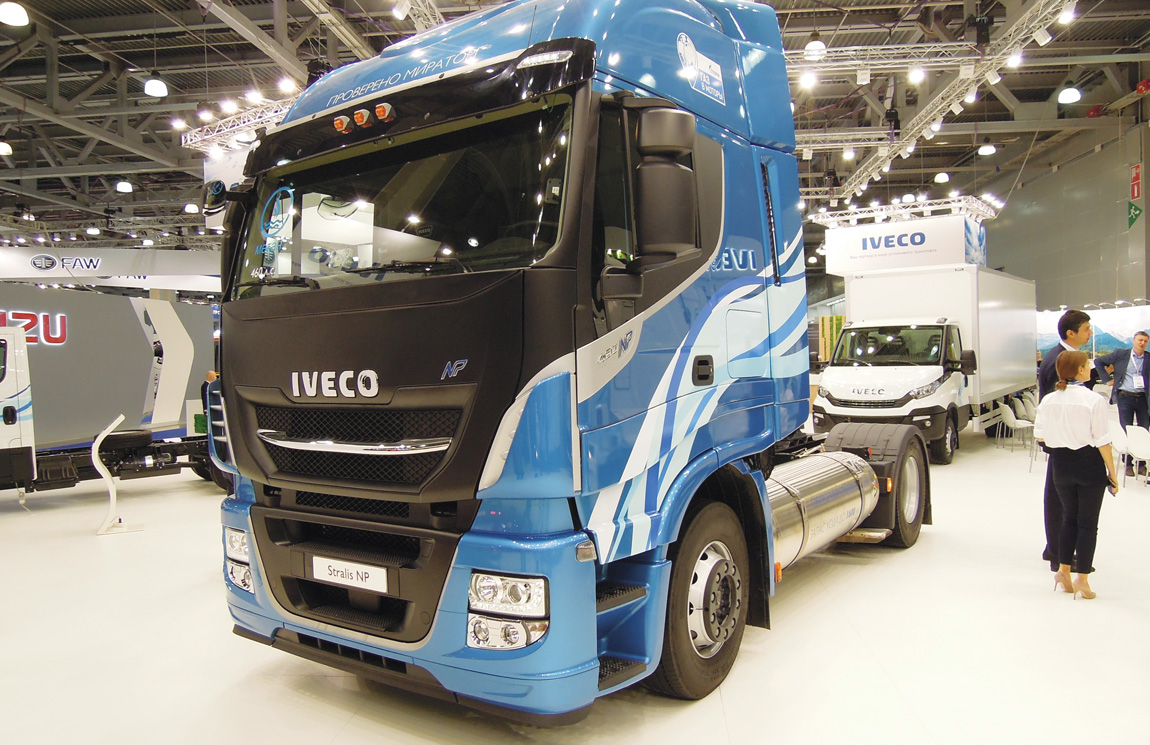
I climbed into the cab on the stand. The interior is attractive; it looks comfortable and the safety features are impressive. This cab has a flat floor and a width of 2 500 mm. It offers very good ergonomics and convenience for the driver.
The truck is equipped with a 12-litre six-cylinder in-line 450 hp/336 kW engine, the Kamaz Р6 (class Euro 5 or Euro 6). The engine range covers 380 to 550 hp (283 to 410 kW). The engine is paired to a 12-speed automated ZF TraXon transmission. The service interval for the truck is 120 000 km.
The P6 was designed by Kamaz and Liebherr. The plant has produced about 80 of these trucks. Fully fledged production of the new truck should begin at the end of the year — but the prices are already known. As standard, the Kamaz-54901 will cost 6,5-million rubles (R1,27 million). This price includes a mandatory three-year service contract.
Also on display was an unusual heavy truck: the Kamaz 6355 Arctic 8×8. This all-terrain vehicle is designed to operate in districts in the far north, where temperatures can be very low (down to -60°C). The truck is equipped with a 12-litre, 450 hp (336 kW) engine, the Kamaz P6.910.12-450 (Euro 5), six-speed automatic transmission Allison 4500, hydrostatic transmission and Kamaz K5 cab.

The key feature of the Kamaz Arctic is the articulated frame. Thanks to it, the truck turns as a result of
the “breaking” half-frames (not thanks to the steering wheels).
Special, wide tyres are another important feature of this all-terrain vehicle. These tyres enable the truck to move on soil with low bearing capacity (in wetlands, tundra and snow, for instance). The payload of the vehicle is 14 900 kg, while the kerb weight is 26 580 kg. The length of the Arctic is 12 m.
The new long-haul tractor – the Kamaz -5490 NEO-2 LNG – is powered by a 400 hp gas (298 kW) engine from China’s Weichai Power, namely the WP12NG400E50 (Euro 5). The engine is paired to a 16-speed ZF transmission. The cab hails from the Mercedes-Benz Axor and the drive axle is the Daimler HL6.
Gas is stored in a cryogenic container with a volume of 530 litres. With one filling, the Kamaz-5490 NEO 2 LNG can travel up to 750 km. Serial production of these trucks should begin next year. The price of the tractor will be about seven-million Russian rubles (about R1,58 milion).
MAZ
The Belarus truck maker showed its new truck tractor – MAZ-54A02K-520-030 (4×2) LNG – equipped with
400 hp (298 kW) natural-gas engine from Weichai Power, the WP12NG 400E50 (Euro 5) and 16-speed ZF gearbox.

The truck is equipped with gas tanks from Chart in the United States, or China’s CIMS”. The total volume of the tanks is more than 700 litres, which allows the truck to travel for about 500 km.
MAZ is currently preparing to enter the heavy-duty segment of the southern African market. The brand had two trucks on display at the Futuroad truck and bus expo, last month. Valery Tarasenko, the local representative of the company, says it has been preparing to enter the African right-hand drive market for the past two years.
“We have completed homologation on several models, including the two we displayed on our stand – the MAZ-656587 (8×4), a 27-t tipper, and the MAZ-646087 truck tractor, which is capable of pulling a load of 60 t on a dumper semi-trailer,” Tarasenko told FOCUS.
MAZ has been making trucks at its plant in Minsk in the former Soviet Union since 1944 and has a very comprehensive range, focusing on heavy-duty operations and special applications. The right-hand drive MAZ trucks are scheduled to be assembled at a factory in Richards Bay for sale in East and South Africa.
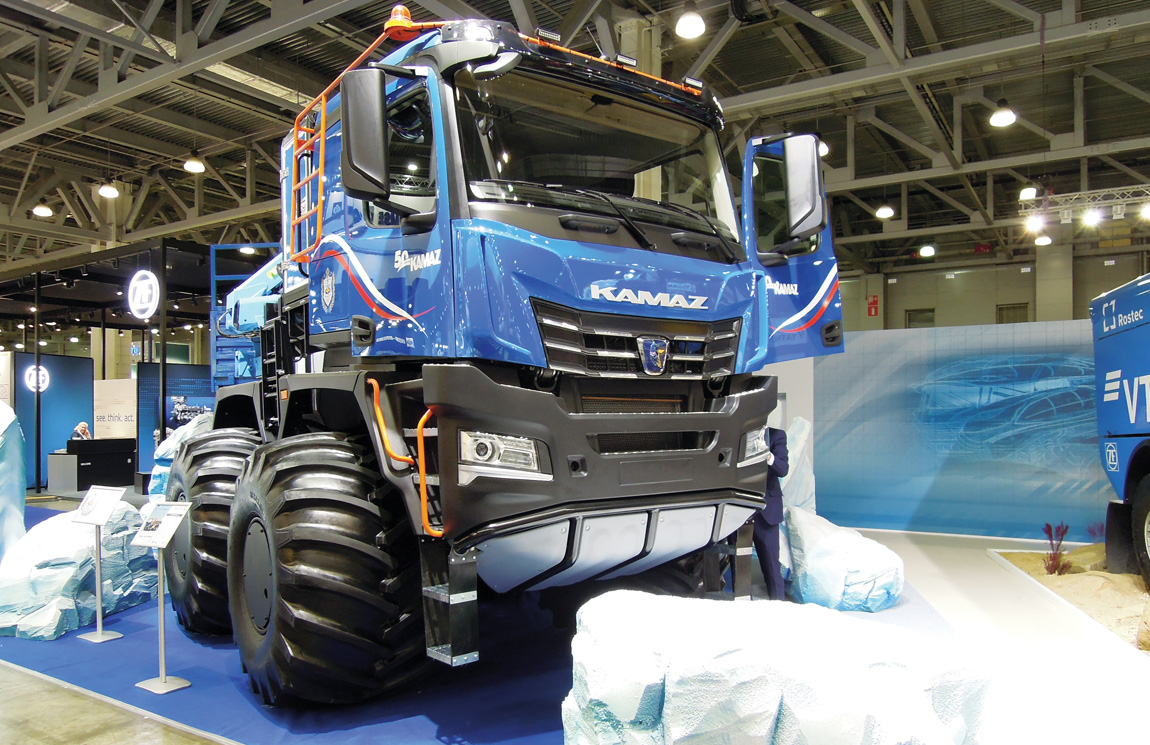
GAZ GROUP
The GAZ Group presented the new 10-t GAZonne NEXT 10 LNG/CNG. It was designed to work on long-distance routes. The powertrain of the truck includes the YaMZ-534 (Euro-5) gas engine, which delivers with 170 hp (127 kW) of power and maximum torque of 600 Nm. It has a nine-speed transmission. The LNG tank holds 225 litres and the maximum speed of the vehicle is 105 km/h.
URAL
URAL introduced an updated cab-over truck. At the exhibition we could see the latest reincarnation of the old cab from the Iveco TurboStar. The new range gets a new front panel. In time, the cab will get a completely modernised interior.
The Ural C26.328R (6×4) cab-over dump truck is equipped with a 328 hp (245 kW) engine, the YAMZ-53676.10 (Euro-5), nine-speed ZF transmission, drive axles from HandeAxel (China) and 16 m³ tipper body. The payload of the truck is 16,5 t.
IVECO
Iveco presented natural-gas vehicles. Last year, more than 150 Iveco gas trucks were sold in Russia. The flagship Iveco Stralis NP 460 LNG occupied pride of place on the stand.
Iveco also displayed trucks produced in conjunction with its Russian joint venture, Iveco-AMT. In Moscow we could see a special version of the Iveco Trakker (6×6), designed to work with a gross weight of 97 t. The tractor is equipped with a 13-litre, six-cylinder 450-hp Cursor 13 engine and a 16-speed transmission, the ZF16S2220TO. The cab features two air-suspended seats as well as electric heating and air-conditioning.

VOLVO TRUCKS
Volvo Trucks showed its FH 460 LNG truck tractor which, as its nomenclature implies, is powered by liquefied natural gas (LNG).
Another interesting vehicle was the Vera concept truck, which really got the tongues wagging at the last IAA. It represents the future of autonomous electric transport. It is equipped with full electric drive and it is autonomous. Although it was very interesting, the bad roads in Russia make its implementation in this country most unlikely.
HINO
The official Hino distributor presented new models from the Hino 500 series. One of them was the Hino 500 FM Euro-5 dump truck with gross vehicle mass of 26 t. The new models have a cab with an updated design, a new three-section bumper, a new drivetrain and new high-strength frame.
The main visual differences between the old and new cab design are the V-shaped front panel, a bolder Hino logo, as well as improved optics. The interior has a new dashboard with a multifunctional LCD screen and a more comfortable driver’s seat.
At Comtrans 2019 we saw a 26-t, 6×4 chassis on a Hino 500 series FM. The new model is equipped with a more powerful nine-litre 350-hp (261 kW) engine that delivers maximum torque of 1422 Nm. It boasts a new transmission and locking wheel differential.

ALMATRUCK
Almatruck is the name of the first 4×2 truck produced by the Kazakhstan company, Saktagan. It is the result of a joint venture with the Chinese company C&C Truck. The gorgeous cab from C&C trucks was developed by the Italian Torino Design Company.
The trucks are assembled in the Kazakhstan city of Almaty, where the workers assemble kits with the addition of some local components. This truck has a six-cylinder, 10,3-litre engine, the Yuchai YC6K1034-50 (Euro 5). Engine output is 340 hp (254 kW). The motor is matched to a 12-speed manual transmission, the Fast 12JSD180TA. The kerb weight of the tractor is 7 505 kg, and the gross weight of the vehicle is 25 t.
LNG POISED FOR GROWTH IN RUSSIA
In September, Novatek-Azk opened the first liquefied natural gas (LNG) gas station in Russia. It is located in Kopeysk (Chelyabinsk region). Leonid Mikhelson, chairman of the board of Novatek-Azk, took part in the opening ceremony of the new gas station.
He said that his company is completing construction of a plant for the production of LNG in Magnitogorsk. The plant will be completed in 2020. The Chelyabinsk region is going to buy 300 LNG city buses. Natural gas has huge potential and could be a substitute for diesel in trucks and buses.
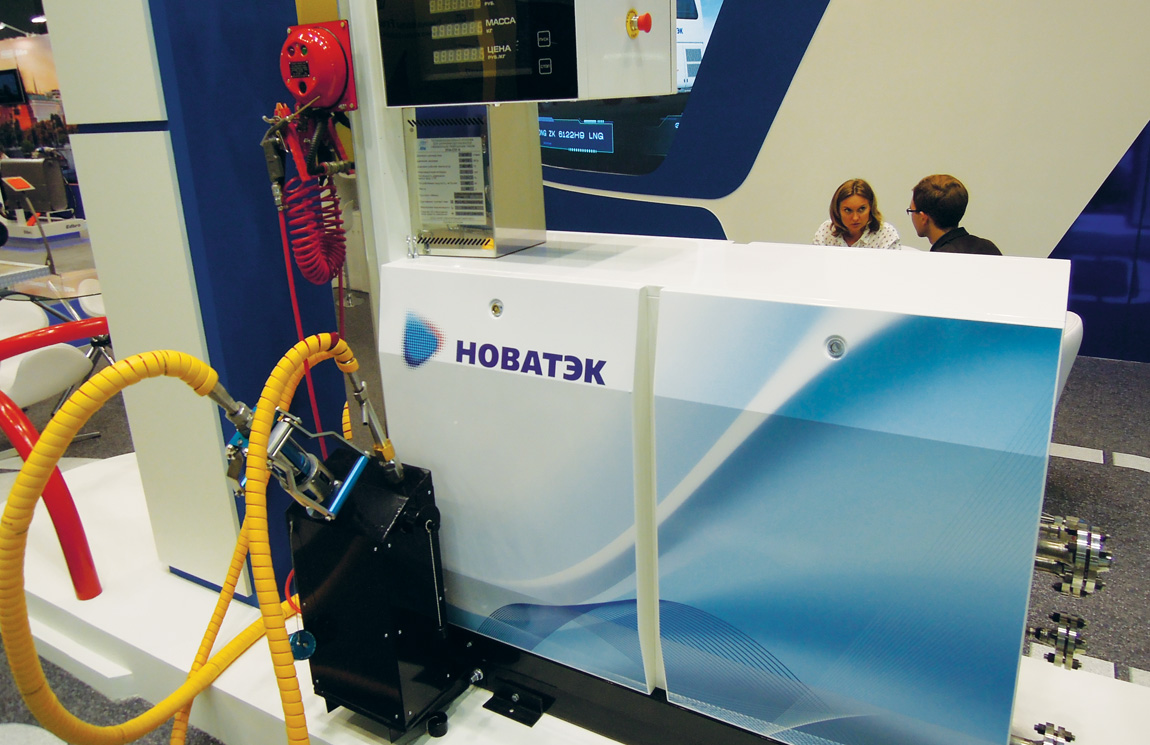
Comtrans clearly demonstrated that almost all the automakers are ready to offer LNG vehicles to the Russian market. What will push transport companies to buy gas trucks and buses? They will buy these vehicles if the price and running costs are appealing.
And the running costs do appear to be good. Take, for instance, the price of LNG in the Chelyabinsk region. It will be 26.7 rubles/kg (R6/kg). One litre of diesel in Russia costs from 44 to 48 rubles (R10 to R10,85).
As one kilogram of LNG has the same energy value as 1,39 litres of diesel fuel, the price of gas would be around 19.2 rubles/l (R4,34/l). It is very good!
LNG also has two very significant advantages over diesel. First, LNG cannot be stolen from the fuel tank. This, of course, makes Russian transport operators very happy. Second, LNG will not freeze, even during Russia’s extreme winter. This means that we will probably see widespread usage of this alternative fuel in Russia.
Published by
Charleen Clarke
focusmagsa




